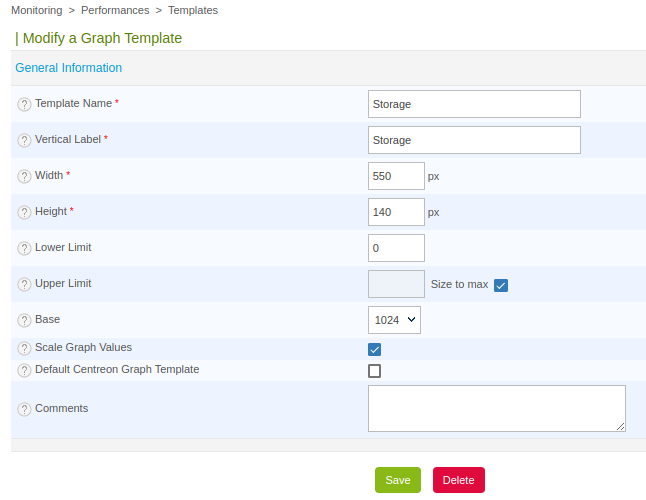Hello !
When you monitor a host the values in perfdata have the max values.
Is it possible to visualize this max value into Centreon grahs, without exploding the max value ?
I don’t want to use the explode perfdata, because I already have multiple value into the graph.
For examples :
[centreon-engine@xxxxxx plugins]$ ./centreon_plugins.pl --plugin=apps::monitoring::netdata::restapi::plugin --mode=disks --hostname=xxxxxxx --proto=https --fs-name='^(?!(/dev|/run|/boot|/srv/varoptbesclient))' --filter-perfdata='usage.bytes'
OK: All partitions are ok | '/#storage.space.usage.bytes'=4778252585B;;;0;9923968936.12933 '/appli#storage.space.usage.bytes'=73429015B;;;0;2936442404.10378 '/appli/log#storage.space.usage.bytes'=6856700B;;;0;1922490497.70885 '/appli/var#storage.space.usage.bytes'=1240043494B;;;0;30312924081.8156 '/home#storage.space.usage.bytes'=222396413B;;;0;952840212.604518 '/tmp#storage.space.usage.bytes'=17592293B;;;0;3861790960.54333 '/var#storage.space.usage.bytes'=5700491585B;;;0;9923969043.50351 '/var/tmp#storage.space.usage.bytes'=127369187B;;;0;952840212.604518








